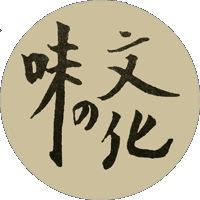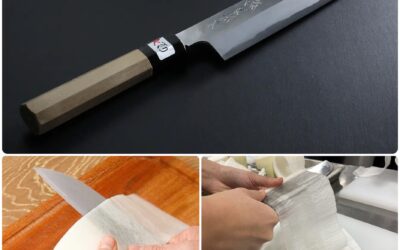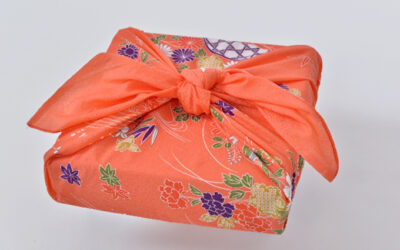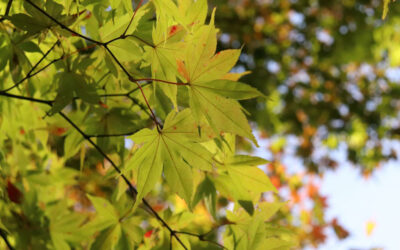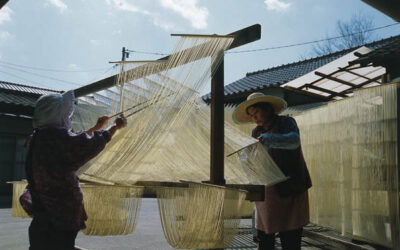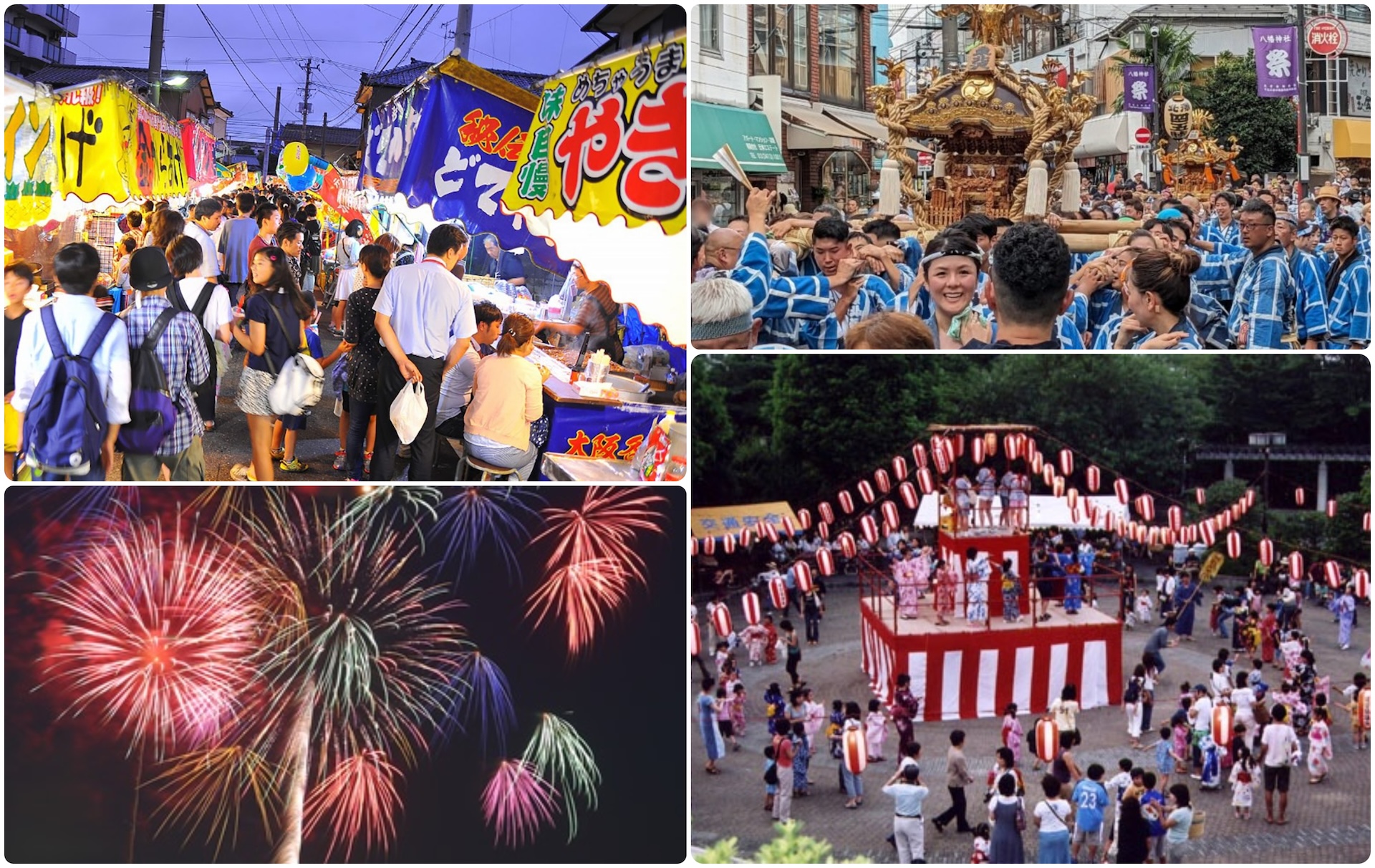
SUMMER FESTIVALS: Yatai, Mikoshi, Bon Odori, Hanabi
Throughout Japan summertime is a time for natsu matsuri: summer festivals. And that means hanabi 花火 (fireworks), mikoshi 神輿 (portable Shinto shrines paraded through the streets during festivals), and bon odori 盆おどりdancing in addition to yatai 屋台 food stalls.
Lilting melodies drifting out on warm evening air draws in casual passers-bys to join in the local fun of bon odori dancing. And the smell of fresh roasted, soy-slathered corn and griddle-seared squid beckon all within wafting distance to partake of these and other yatai snacks.
Most natsu matsuri are sponsored by neighborhood or community merchant associations and are held on local shrine or temple grounds, or in the district’s school yard. Grown-ups and children alike don cotton yukata robes and geta clogs – the matsuri’s first aid station dispenses lots of bandaids for blisters between the toes! Toddlers run about in jacket-and-shorts outfits called jimbei and many babies sport festive happi coats worn over diapers.

Children’s geta are rigged with bells that jingle – loudly. In theory this alerts parents to their kids whereabouts but lost-child announcements frequently interupt folk melodies eminating from the loudspeaker.
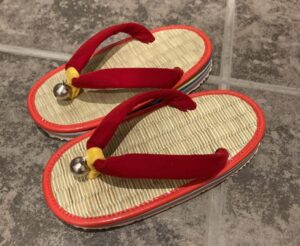
Any and all passers-by are pulled in to the action by members of the organizing committee who enthusiastically offer on-the-spot tutorials in local dance steps and hand-waving motions.
Dancing builds thirst and an appetite. Nearby, yatai food stalls lure matsuri-goers with an enthusiastic chorus: irasshai, irasshai… oishii desu yo!” (come on… try this, its delicious!). There’s old-fashioned, lemonade-like lamuné and cotton candy for the kids; cold beer and ika yaki, griddle-seared squid, for the grown-ups.
Want to join the fun? Make griddle-seared squid in your own kitchen with PROJECT: Ika Yaki.
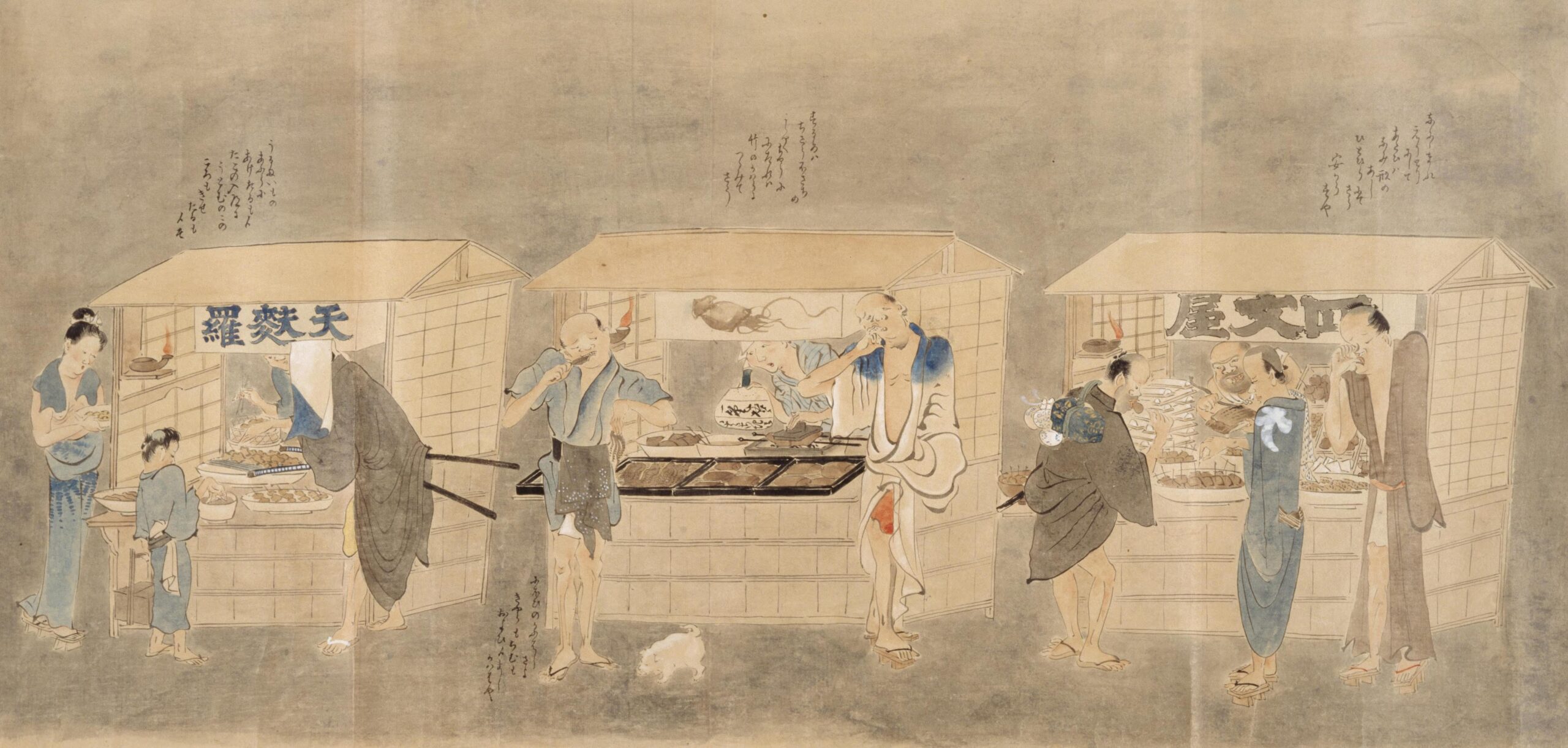
屋台 YATAI food stalls
Yatai food stalls have been popular for hundreds of years. Pictorial evidence includes a series of scrolls called Kinsei shokunin zukushi ekotoba (近世職人尽絵詞) depicting tradespeople during the Edo period. This scroll drawn by Kuwagata Keisai (鍬形蕙斎筆1764-1824) is archived in the Tokyo National Museum.
On the left a TEMPURA stall, on the right is SHIMONYA (skewers of tofu and oden each costing 4 “mon,” about ¥150 in today’s economy) and in the center is IKA YAKI (skewered griddle-seared squid)
Download a copy of the AUGUST, 2025 newsletter, about Summer Festival Food YATAI。
